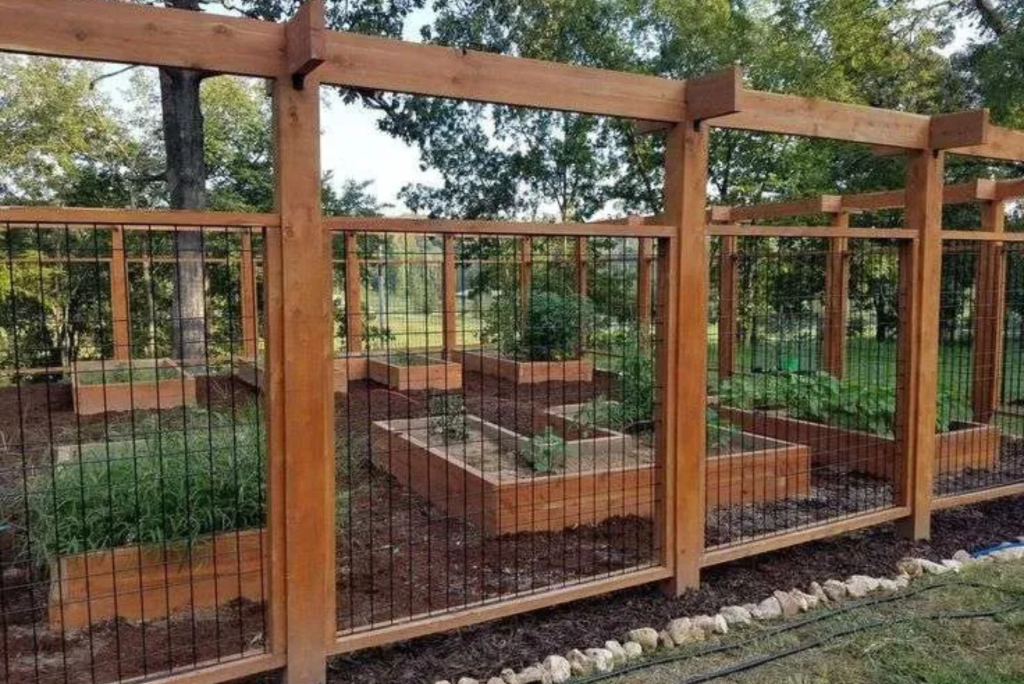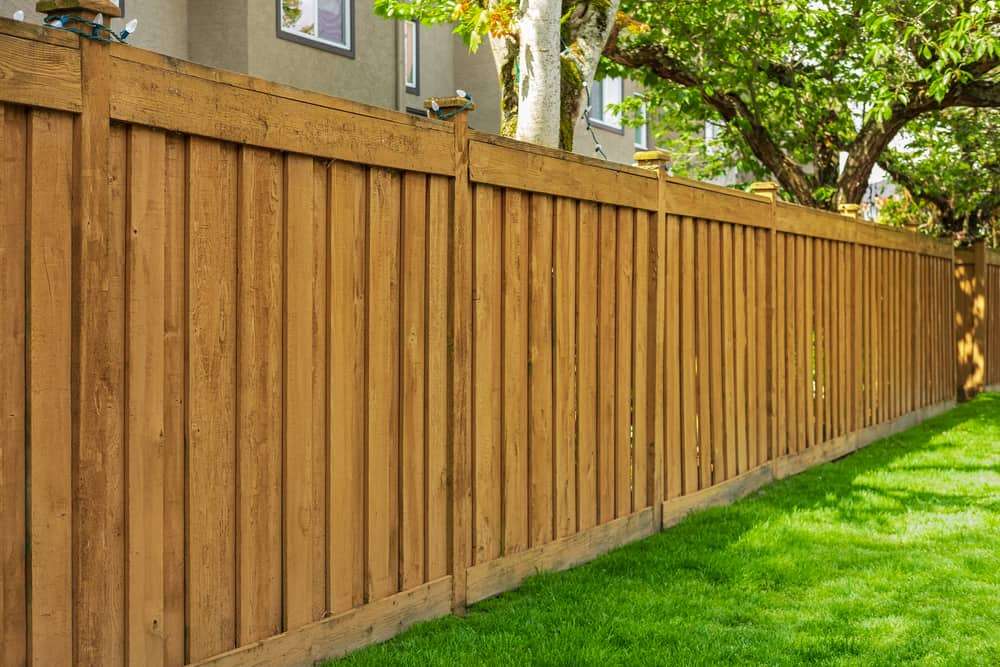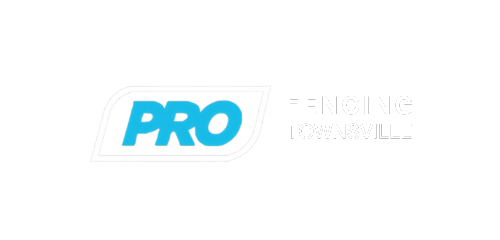
When it comes to looking for the types of timber fencing that may suit your property, understanding the differences and styles available is crucial.
As a fencing contractor with experience in both residential and commercial projects in Townsville, I can tell you that timber fencing offers a natural, versatile solution for many needs. Whether it’s enhancing privacy, securing boundaries, or adding aesthetic value, choosing the right style and materials will make a huge difference.
In this guide, we’ll explore the main types of timber fencing to help you make an informed decision.
Table of Contents
- Types of Timber Fencing for Townsville
- Benefits of Timber Fencing
- Types of Timber Fencing for Commercial Projects
- Maintenance Tips

Types of Timber Fencing for Townsville
Paling Fencing
Affordability:
Paling fences are one of the most economical fencing options available, making them a popular choice for homeowners in Townsville. They’re particularly cost effective when covering large boundary areas. Timber paling fences remain a budget friendly option, making them a staple in the different types of timber fencing available.
Durability:
Treated pine or hardwood is essential in Townsville’s tropical climate to resist termites, fungal decay, and warping caused by humidity and heavy rain. Timber requires more maintenance but offers a classic look, making it a common choice among various types of timber fencing.
Privacy:
The flexibility of paling installation allows you to choose complete privacy by butting the palings together or partial visibility by spacing them. Taller fences can also block out neighbouring properties, a feature often sought after in different types of timber fencing.
Customisation:
Paling fences can be left natural for a rustic look or painted in colours like white or grey to suit modern and classic styles alike, ensuring they fit within many types of timber fencing styles.
Common Applications:
Ideal for creating secure boundaries between residential properties, particularly in suburban neighbourhoods. Among the types of timber fencing, paling fences remain a preferred choice for privacy and affordability.
Lapped and Capped Fencing
Enhanced Privacy:
Overlapping palings leave no gaps, offering maximum privacy for homes close to neighbours or along busy streets. Lapped and capped fences provide similar privacy to Colorbond but with a more traditional aesthetic, making them one of the most effective types of timber fencing for privacy.
Added Strength:
The capping provides structural reinforcement by preventing palings from separating over time and protecting the timber from water ingress at the ends. This makes lapped and capped fencing a durable option among the various types of timber fencing.
Aesthetic Appeal:
The polished top capping adds a finished look, making it more attractive than traditional paling fences. This design is favoured for properties aiming for a clean, uniform style, further enhancing its popularity among types of timber fencing.
Durability:
Thanks to the double layer of timber and protective capping, this type of fence withstands harsh weather and heavy winds better than single layer designs. While Colorbond offers rust resistance, timber can be refinished and repaired easily, adding to its appeal among different types of timber fencing.
Common Applications:
Frequently used in residential properties for side and back fences where privacy and durability are priorities. It is also a common choice for schools and daycare centres, solidifying its place among the many types of timber fencing.
Horizontal Slat Fencing
Modern Design:
Horizontal slats give a sleek, contemporary appearance that pairs well with modern architecture, making it a stylish choice for newer homes and commercial developments. Horizontal slats provide a more open, airy look, distinguishing them from other types of timber fencing.
Customisable Spacing:
The gaps between slats can be adjusted to control airflow and visibility. Wider gaps are ideal for open designs, while narrower gaps offer more privacy, making this one of the more flexible types of timber fencing.
Material Options:
Common timber choices include Merbau and hardwood, both of which are naturally resistant to decay. Treated pine is another economical option when properly sealed, ensuring a range of choices among types of timber fencing.
Low Maintenance:
Horizontal slats can be treated with UV resistant oils and stains to preserve their colour and texture in Townsville’s tropical environment. Unlike Colorbond, timber slats may require periodic refinishing to maintain their appearance, a key consideration when selecting types of timber fencing.
Common Applications:
Ideal for front fences, pool enclosures, and courtyard dividers. Commercial spaces like cafés and restaurants also use horizontal slat fencing for outdoor areas, reinforcing its presence among types of timber fencing.
Post and Rail Fencing
Simple Construction:
The basic design of vertical posts and horizontal rails makes this fence a low cost yet highly functional choice. Post and rail is better suited to rural properties where aesthetics and boundary marking are key, making it a distinct option among types of timber fencing.
Functionality:
This style is particularly suitable for large properties, marking boundaries effectively without the need for solid panels. Adding wire mesh ensures safety for livestock or pets, a practical feature in various types of timber fencing.
Rustic Charm:
Post and rail fencing has a traditional, natural aesthetic that complements rural or semi rural properties. Its rustic appeal differentiates it from other types of timber fencing.
Durability:
Hardwood posts treated to resist rot and pests ensure the fence lasts for years, even in Townsville’s humid climate, making it a durable choice within the range of types of timber fencing.
Common Applications:
Commonly found on farms, acreage properties, and open space commercial properties like equestrian centres or parks. Among the different types of timber fencing, post and rail remains a top choice for rural applications.
Picket Fencing
Timeless Appeal:
Often associated with quaint, traditional homes, picket fences evoke a sense of charm and nostalgia. Picket fences offer a more decorative, heritage inspired look, distinguishing them among types of timber fencing.
Customisable Design:
Choose from pointed, rounded, or scalloped picket tops to suit your home’s style. Heights can range from 0.9 metres for front gardens to taller designs for additional security, adding to their customisation options within types of timber fencing.
Low Height:
Picket fences are primarily decorative, ideal for defining garden boundaries or front yards without obstructing views. Their aesthetic function makes them a unique choice among types of timber fencing.
Best Materials:
Treated pine is lightweight and cost effective, while hardwood is more durable and better suited to humid climates, offering different material options among types of timber fencing.
Common Applications:
Perfect for enhancing kerb appeal in suburban homes, marking small garden areas, or creating a decorative boundary for pathways. Picket fences remain a classic option among the many types of timber fencing.
Benefits of Timber Fencing
Colorbond vs timber fencing is an important consideration for properties in Townsville. Timber fencing offers a range of benefits, making it a popular choice. It’s not only versatile but also cost-effective compared to other materials like steel or aluminium.
Natural Aesthetic:
When comparing Colorbond vs timber fencing, timber blends seamlessly with Townsville’s tropical environment, offering a warm and inviting look that complements gardens and natural landscapes.
Cost Effectiveness:
In the Colorbond vs timber fencing debate, timber fencing is generally more affordable than materials like steel or aluminium and provides excellent value for its lifespan.
Versatility:
Colorbond vs timber fencing comes down to personal preference, and timber offers the flexibility to be tailored to different styles and finishes. Whether painted white for a classic look or stained to highlight natural grain, timber works for a range of aesthetics.
Sustainability:
For those weighing up Colorbond vs timber fencing, responsibly sourced timber is an eco-friendly option, and some types of timber fencing can be recycled at the end of their lifespan.
Noise Reduction:
One advantage in the Colorbond vs timber fencing debate is that the solid structure of timber fencing helps dampen external noise, offering a quieter and more private outdoor space.
Types of Timber Fencing for Commercial Projects
For commercial fencing projects, timber can still be a viable option, particularly when you need to maintain a natural look. However, combining timber with materials like aluminium or Colorbond for gates or higher security areas may offer better overall functionality.
For example, types of timber fencing like lapped and capped fencing with steel posts provide extra durability without sacrificing the aesthetic qualities of wood. Commercial properties in Townsville often benefit from using timber in areas where visual appeal is crucial, such as outdoor dining spaces or along walkways.
Lapped and Capped Fencing with Steel Posts:
Offers added durability for commercial areas with high foot traffic while retaining the warmth and natural appeal of timber.
Horizontal Slat Fencing:
Ideal for storefronts, cafés, and outdoor seating areas, providing a modern aesthetic that enhances the overall property design.
Combination Fencing:
Timber can be paired with aluminium or Colorbond for gates, entrances, or higher security zones, providing both strength and style.
Acoustic Fencing:
Specialised timber fences are designed to reduce noise pollution, making them suitable for offices, hotels, and properties near busy roads or industrial zones.
Maintenance Tips
Maintaining timber fencing in Townsville’s climate requires diligence. Regular treatments with sealants or oils will protect the wood from moisture damage, UV exposure, and termites. Staining or painting every 2-3 years helps prolong the lifespan of the fence.
Additionally, make sure to inspect the different types of timber fencing annually for any signs of wear or rot, especially after the wet season. Keeping the base of the fence clear from overgrown plants or soil buildup will prevent decay at ground level, which is a common issue in tropical climates.
Regular Treatments:
Apply weatherproofing sealants, oils, or stains to protect the timber against humidity, rain, and UV damage. For Townsville’s climate, reapplication every 12–18 months may be necessary.
Annual Inspections:
Check for signs of rot, warping, loose nails, or termite damage. Pay special attention to posts and the base of the fence, where moisture often accumulates.
Base Clearance:
Keep the area around the fence clear of plants, soil buildup, or debris that can trap moisture and accelerate decay.
Prompt Repairs:
Replace any damaged or broken palings, rails, or posts as soon as possible to prevent further structural damage.
Cleaning:
Use a soft brush and mild detergent to clean the fence periodically, removing mould, mildew, and dirt buildup caused by the humid conditions.
This expanded guide ensures each fencing type, benefit, and maintenance tip is explained thoroughly for homeowners and businesses in Townsville, taking into account the local climate and aesthetic preferences.

Why Choose Us for Your Fencing Needs
- Expertise Across All Fencing Types: We bring years of experience in both residential and commercial fencing, ensuring every project is completed to the highest standards.
- Local Knowledge: Being based in Townsville, we understand the unique challenges the local climate presents and offer solutions tailored to this environment.
- Quality Materials: We use only the best, most durable materials, with a focus on treated timbers that stand up to heat, humidity, and termites.
- Custom Solutions: Whether you need privacy, security, or a design that enhances the look of your property, we’ll work with you to deliver a tailored result.
- Competitive Pricing: Our pricing is transparent and competitive, offering value without compromising on quality.
For more information or to request a free quote, contact our team today and let’s discuss your fencing needs.
FAQs
The best type of timber fencing for privacy in Australia is a solid panel fence, such as a lapped and capped timber fence. This style provides a seamless, gap-free barrier that keeps your property well-shielded from neighbours and passers-by. It’s not only functional but also aesthetically pleasing, blending beautifully with most landscapes.
In Townsville, a well-maintained timber fence can last between 15 to 25 years, depending on the quality of the timber and the local conditions. Regular treatments to protect against rot, termites, and weathering are crucial in extending its lifespan. Choosing a durable, treated timber is key to getting the most out of your fence in the tropical climate.
In tropical climates like Townsville, hardwoods such as Merbau or treated pine are excellent choices. These timbers are naturally resistant to moisture, termites, and decay, making them ideal for withstanding the humidity and heavy rains common in the region. Always opt for timber that’s been treated specifically for outdoor use in tropical conditions.
Yes, timber fencing can withstand Townsville’s wet season if you choose the right materials and maintain it properly. Treated hardwood or treated pine, combined with water-repellent coatings, ensures the fence resists water damage and decay. Installing the fence with proper drainage and ensuring no soil buildup at the base will further protect it during heavy rains.
Timber fences require periodic maintenance to stay in top shape. This includes applying weatherproof treatments, such as staining or sealing, every 1-2 years, and inspecting for signs of damage, like cracks or termite activity. Regularly cleaning the fence to remove dirt and debris will also help prevent mould or decay.
Absolutely! Timber fencing is both practical and versatile, making it a great choice for commercial properties. It can be tailored to suit various needs, from providing privacy and security to enhancing aesthetic appeal. Treated timber is robust enough to handle frequent wear and tear, ensuring it remains a reliable and professional-looking option.
In Townsville, the standard height for a timber fence is usually 1.8 metres, but you can build up to 2 metres without council approval in most cases. For heights beyond this, you’ll need to consult with the local council to ensure compliance with regulations. Always check with your neighbours as well to maintain good relationships.

